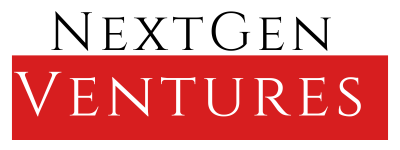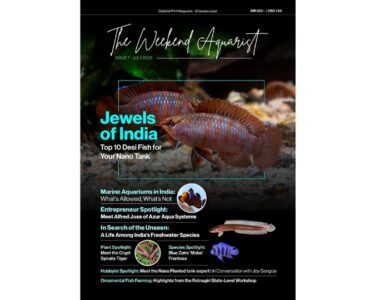In today’s fast-paced world, balancing work and personal life feels like an elusive goal. With technology blurring boundaries and demands piling up, finding harmony is more critical than ever. The year 2025 brings new challenges and opportunities, from hybrid work models to evolving societal expectations. Achieving work-life balance isn’t about perfection but about creating a sustainable rhythm that supports your well-being and productivity. This article explores practical, actionable tips for balancing work and life, helping you navigate the complexities of a high-speed world. From time management to mental health strategies, these insights will empower you to thrive in 2025.
Understanding the Importance of Work-Life Balance
Work-life balance is about allocating time and energy to both professional and personal priorities without sacrificing one for the other. It’s essential for mental health, physical well-being, and long-term productivity. In a fast-paced world, constant connectivity can lead to burnout, strained relationships, and diminished job satisfaction. Prioritizing balance fosters resilience, creativity, and a sense of fulfillment. In 2025, as remote and hybrid work continue to dominate, individuals face unique pressures to stay “always on.” By intentionally managing your time and energy, you can protect your health and maintain meaningful connections, setting the stage for a more rewarding life.
Setting Clear Boundaries Between Work and Home
One of the most effective ways to achieve balance is by establishing firm boundaries. In 2025, where virtual meetings and instant messaging are the norm, it’s easy for work to spill into personal time. Start by defining specific work hours and sticking to them. Communicate these boundaries to colleagues and supervisors to manage expectations. For example, avoid checking emails after a certain hour or during weekends. If you work from home, create a dedicated workspace to mentally separate professional tasks from personal life. When the workday ends, physically leave that space to signal a transition. These practices help you stay present in both domains, reducing stress and enhancing focus.
Mastering Time Management for Greater Control
Effective time management is the backbone of work-life balance. In a fast-paced world, prioritizing tasks ensures you focus on what truly matters. Begin each day by identifying your top three priorities, both at work and in your personal life. Use tools like digital planners or apps to schedule tasks and allocate time for breaks. The Pomodoro technique, which involves working in focused intervals followed by short rests, can boost productivity while preventing fatigue. Avoid multitasking, as it often leads to errors and mental exhaustion. Instead, tackle one task at a time with full attention. By organizing your day strategically, you create space for both professional success and personal fulfillment in 2025.
Prioritizing Self-Care to Sustain Energy
Self-care is non-negotiable when balancing a demanding lifestyle. In 2025, with wellness trends emphasizing holistic health, small, consistent habits can make a big difference. Ensure you’re getting enough sleep, as rest is critical for mental clarity and resilience. Aim for seven to eight hours nightly and maintain a consistent bedtime routine. Physical activity, even a short walk or yoga session, boosts mood and energy levels. Nutrition also plays a role—opt for balanced meals that fuel your body rather than relying on quick, processed foods. Carving out time for hobbies, like reading or gardening, nurtures your spirit and prevents burnout. By prioritizing self-care, you build the stamina to handle life’s demands.
Leveraging Technology Wisely
Technology can be both a blessing and a curse in a fast-paced world. In 2025, smart tools can streamline tasks but also create distractions. Use productivity apps to stay organized, such as task managers that sync across devices or calendar tools that send reminders. However, be mindful of overuse. Limit notifications during non-work hours to avoid constant interruptions. Consider setting app limits on social media to reclaim time for meaningful activities. Wearable devices can also support balance by tracking sleep, activity, and stress levels, offering insights to optimize your routine. By using technology intentionally, you harness its benefits without letting it dominate your life.
Building a Support System for Balance
No one achieves balance in isolation. A strong support system, whether at work or home, is vital for navigating a fast-paced world. At work, foster open communication with colleagues to share workloads or delegate tasks when needed. Don’t hesitate to seek mentorship or discuss challenges with a manager. In your personal life, lean on family and friends for emotional support or practical help, like sharing household responsibilities. In 2025, virtual communities and professional networks also offer valuable connections. Joining groups focused on wellness or career development can provide encouragement and fresh perspectives. Surrounding yourself with supportive people helps you stay grounded and motivated.
Managing Stress in a High-Pressure Environment
Stress is inevitable in a fast-paced world, but managing it effectively preserves your well-being. Mindfulness practices, such as meditation or deep breathing, are powerful tools for staying calm. Even five minutes of focused breathing can reset your nervous system during a hectic day. Journaling is another way to process emotions and gain clarity. In 2025, apps offering guided meditations or stress-relief exercises are widely accessible, making it easier to incorporate these habits. Physical outlets, like exercise or dancing, also release tension. If stress feels overwhelming, consider speaking with a therapist or counselor for tailored strategies. Proactively addressing stress ensures it doesn’t derail your balance.
Making Time for Relationships and Connection
Relationships are a cornerstone of a fulfilling life, yet they often take a backseat in a busy world. In 2025, nurturing connections requires intentional effort. Schedule regular time with loved ones, whether it’s a weekly dinner with family or a virtual catch-up with friends. Quality matters more than quantity—focus on being fully present during these moments. At work, build camaraderie by engaging in team activities or informal chats. Small gestures, like sending a thoughtful message or expressing gratitude, strengthen bonds. By prioritizing relationships, you create a sense of belonging that enhances both your personal and professional life.
Saying No and Setting Priorities
Learning to say no is a powerful skill for maintaining balance. In a fast-paced world, it’s tempting to overcommit, but this leads to overwhelm. Evaluate requests by asking whether they align with your goals or values. Politely decline tasks or invitations that stretch you too thin, offering alternatives when possible. For example, suggest a later deadline or delegate a task to someone else. At home, prioritize activities that bring joy or fulfillment over obligations that drain you. By setting clear priorities, you protect your time and energy for what truly matters, creating space for balance in 2025.
Adapting to Change with Flexibility
The fast-paced world of 2025 is marked by constant change, from shifting work dynamics to personal milestones. Embracing flexibility allows you to adapt without losing balance. If a work project demands extra hours, adjust your personal schedule temporarily, perhaps by simplifying meals or postponing non-urgent tasks. Conversely, when personal priorities take precedence, communicate with your employer to negotiate deadlines. Regularly reassess your routine to ensure it aligns with your current needs. A flexible mindset, paired with proactive planning, helps you navigate unexpected challenges while staying true to your goals.
Finding Meaning in Work and Life
Balance feels more attainable when your work and personal life align with your values. In 2025, many seek purpose-driven careers, but meaning can also come from small moments. Reflect on what fulfills you, whether it’s solving problems at work or spending time with loved ones. If your job feels misaligned, explore ways to incorporate passion projects or volunteer work into your life. At home, engage in activities that spark joy, like creative hobbies or learning new skills. By weaving purpose into both spheres, you create a sense of harmony that sustains you through the fast-paced demands of the year.
Creating a Personalized Balance Plan
Work-life balance looks different for everyone, so tailor your approach to your unique circumstances. Start by assessing your current routine—note what feels overwhelming and what energizes you. Set specific goals, such as leaving work on time twice a week or dedicating an hour daily to personal time. Break these goals into actionable steps, like silencing notifications after 7 p.m. or scheduling a weekly workout. Track your progress using a journal or app to stay accountable. Periodically review your plan to adjust for new responsibilities or priorities. A personalized plan empowers you to take control and thrive in 2025’s dynamic world.
Conclusion: Thriving in a Fast-Paced World
Balancing work and life in 2025’s fast-paced world is a journey, not a destination. By setting boundaries, managing time, and prioritizing self-care, you create a foundation for sustainable success. Leveraging technology, building support systems, and staying flexible help you navigate challenges with confidence. Above all, finding meaning and nurturing relationships bring richness to both spheres of life. As you implement these tips, remember that small, consistent changes yield lasting results. Embrace the process, celebrate progress, and step into 2025 with a renewed sense of balance and purpose.




